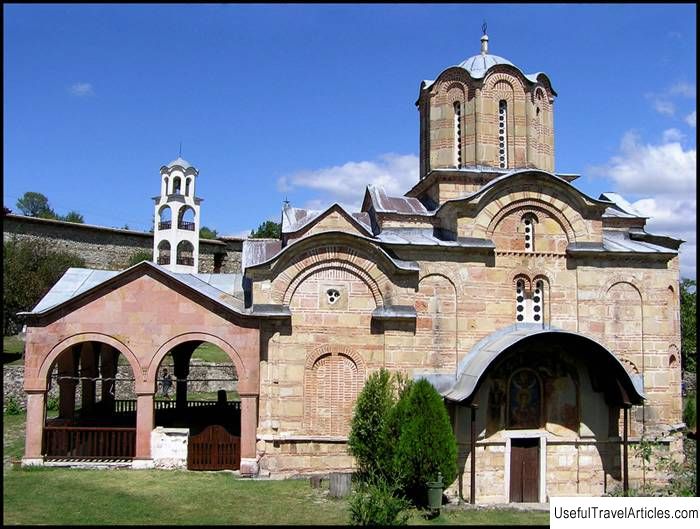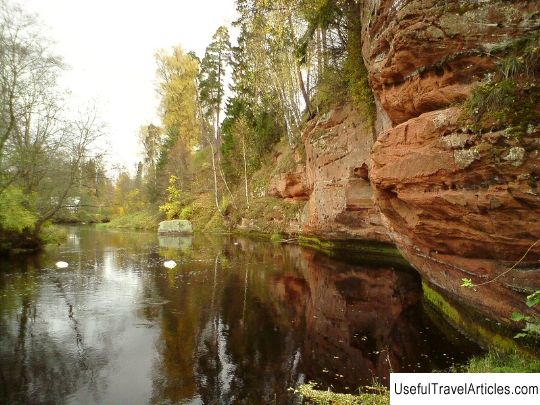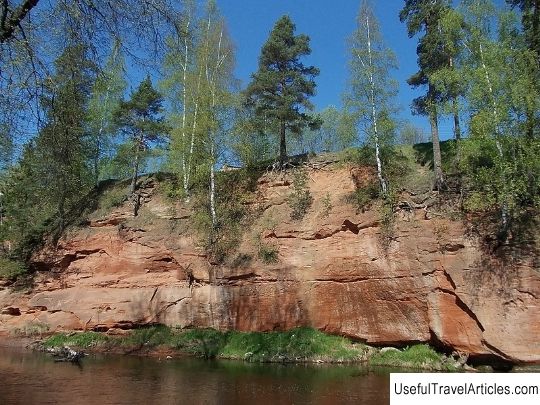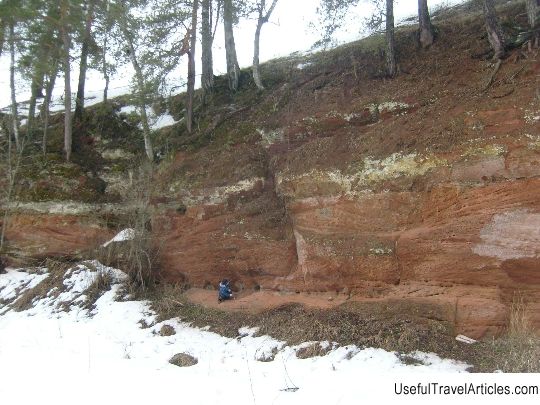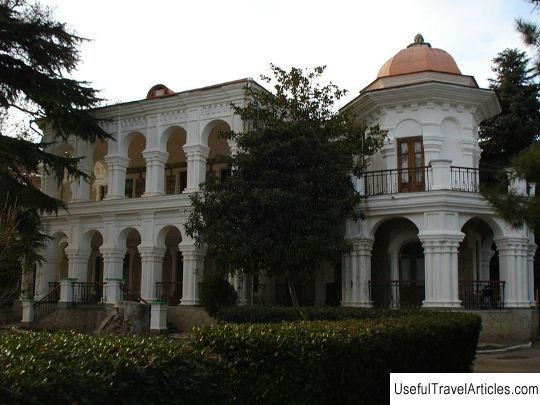Geological outcrops of the Devonian and adits on the Oredezh river near the village of Borshchovo description and photos - Russia - Leningrad region: Luga district
Rating: 8,2/10 (6790 votes) 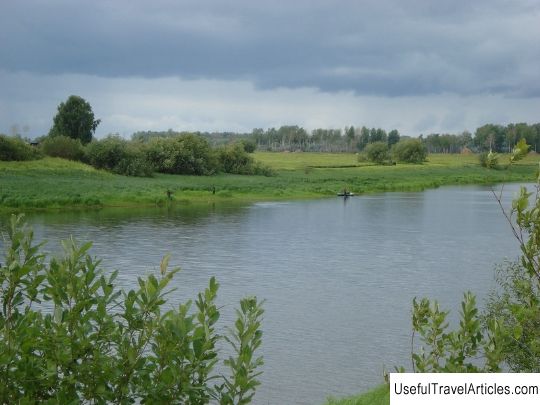
Geological outcrops of the Devonian and adits on the Oredezh River near the village of Borshchovo description and photos - Russia - Leningrad Region: Luga District. Detailed information about the attraction. Description, photos and a map showing the nearest significant objects. Photo and descriptionThe natural monument "Geological outcrops of the Devonian and adits on the Oredezh river near the village of Borshchovo" is located in the Leningrad region, namely in the Luga region, near the railway station Oredezh and the village of Torkovichi. Antonovo Lake is located near the natural monument. You can get to it from the city of St. Petersburg, having reached Luga and then by bus to the village of Borshchovo. The total territorial area occupied by the geological monument is 270 hectares. By Resolution No. 494 of December 26, 1996, the Government of the Leningrad Region declared the geological outcrop as a natural monument and decided to preserve the outcrops of various geological rocks dating back to the Devonian age, as well as old adits. Lake Antonovo, located not far from the natural monument, spreads within the ancient pre-glacial valley of the famous Oredezh River. On a large steep cliff of the bedrock bank in the central part of the turfed areas and embankments, valuable deposits of the Devonian age, which are represented by numerous sandstones of red and white colors, emerge on the most ancient surface. The length of all outcrops is 700-800 m. During 1927-1929, sandstones were mined using adits as a raw material for glass production. To date, a number of manholes in the adits have come down to us, which are not only cognitive, but also of scientific interest. It is in these manholes that one can examine in detail the most ancient geological rocks in their usual natural-natural occurrence. For the reason that the adits are constantly collapsing, their height, profile and length also change dramatically. Some of them almost completely crumbled. In small outcrops located on the northern shore of Lake Antonov, on the territory of a village called Ploskoye, you can find the remains of fossilized fragments of the oldest Devonian fish. If we judge about the flora of a natural geological monument, then in this area it is very deserted as a result of human activity, because this territory is almost completely inhabited by people and has a large number of settlements. The anthropogenic factor affecting the flora is the felling of trees, which is especially typical for nearby settlements, as well as littering and pollution of the territory, trampling and plowing of coastal zones, as well as the destruction of most slopes. As for the coastal areas of Lake Antonov, there are small areas of deciduous or small-leaved forests on it, mostly developed on steep and gentle slopes. Broad-leaved tree species are mostly represented by hazel, rough elm, linden, ash, smooth elm, maple and oak. In the forest zone, you can see alpine and spiky currants, common honeysuckle, tinsel. The herbaceous layer is represented by broad-leaved species of yellow zelenchuk, drooping pearl barley, noble liverwort, finger sedge, lanceolate fescue, spiky crow, lily of the valley, and giant fescue. Small zones of small-leaved forests are mostly represented by gray alder forests, in which dioecious nettle predominates. Near the lake there is a meadow cornflower, a yarrow, an umbrella hawk. The world of birds is represented by a white stork, a roller-roller, a turtledove. Bats are especially rare here: the mustachioed and water bat. The protected objects of the natural monument include the rarest species of animals and plants, such as soft rose, bitter spring, cruciform gentian, rolling roller, white stork. On the territory of the reserve, plowing of land, mining and construction work, wiring of all types of communications, as well as littering of the territory are strictly prohibited. In the area of the geological monument, there is a protection regime that controls the conduct of human economic activity.       We also recommend reading Cetinski Manastir description and photos - Montenegro: Cetinje Topic: Geological outcrops of the Devonian and adits on the Oredezh river near the village of Borshchovo description and photos - Russia - Leningrad region: Luga district. |
